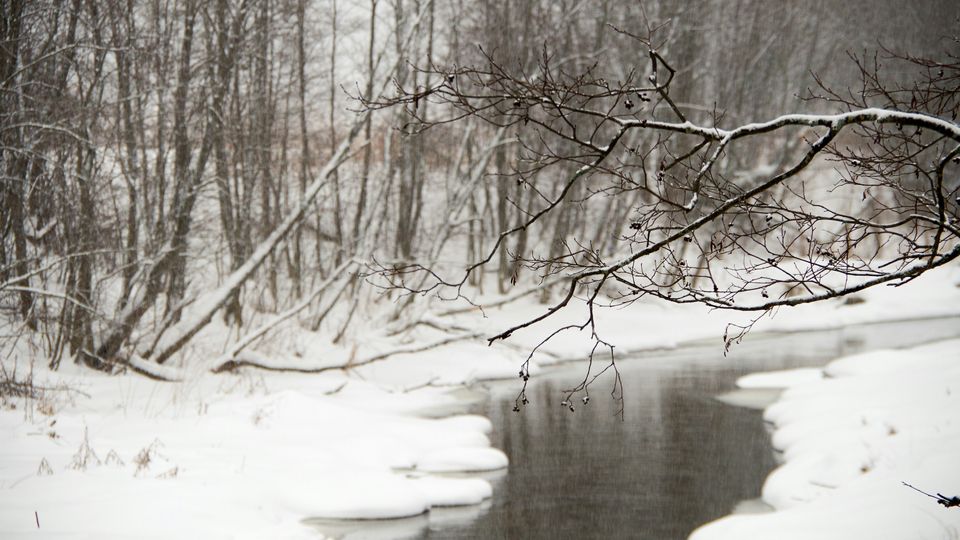Natural Filter Material Helps Clean Contaminated Water in Colder Climates
Researchers from in Canada have shown that an organic "filter" is effective in trapping nitrate, arsenic and uranium from water.

Complete the form below to unlock access to ALL audio articles.
With demand for critical minerals on the rise, mining activity in Northern Canada is only going to increase. That will require new solutions for treating water that becomes contaminated from mining – either from the chemicals used to extract minerals or elements that occur naturally underground.
Given the expense associated with building and staffing regular water treatment plants in the North, researchers are studying other approaches that are less resource-intensive and that will work in colder temperatures.
A research team involving scientists from the Yukon University Research Centre and the Université de Moncton tested a method for cleaning underground water (groundwater) that uses a “filter” – called a permeable reactive barrier (PRB) -- made of natural materials to trap and remove harmful chemicals. Studies have shown this method works in warmer climates, but there’s little research on its effectiveness in arctic and subarctic climates.

“Passive and semi-passive water treatment systems are based on what occurs in nature,” says lead researcher Dr. Morgane Desmau, an environmental scientist and assistant professor at the Université de Moncton. One of the advantages of passive and semi-passive systems, says Desmau, is that -- generally speaking -- they are less resource intensive than a bricks-and-mortar water treatment plant. “Wetlands are a good example (of a passive treatment system).
It takes some time to get it set up, but then it just runs on its own. The idea is to be more sustainable, more cost efficient, and as effective.”
The researchers built a mini water treatment system in their lab, running water through a column containing a mix of gravel, iron particles, and wood chips for nine months. They added nitrate, arsenic and uranium to the water, to match contaminants commonly found in ground water as a result of mining – especially gold mining -- in the North. And they kept their entire system at 5 degrees Celsius to match the temperature of groundwater in the Yukon.
Using the Canadian Light Source at the University of Saskatchewan, they examined their filter material, to see how well it trapped – and retained -- the contaminants. They discovered that this method does indeed work in cold climates, but that it’s difficult to remove all of the chemicals at the same time.
The researchers found the PRB did a good job trapping the arsenic and uranium, but was less effective in removing the nitrate, because of the colder temperature. When they added sodium acetate to the filter, it caused good bacteria to grow and clean the nitrate from the water. But that change resulted in the barrier not trapping as much uranium.
Desmau says future designs may need to have barriers with several different parts in order to trap all of the different contaminants in water. “It’s a good first step in creating more semi-passive water treatment systems that work well specifically in the North.”
The team’s research has real-world applicability. “The design of the experiment was based on information provided by The Yukon Mining Research Consortium (which comprised all the active mine in the Yukon),” says Desmau “They told us ‘This is the kind of water we have, and these contaminants can be present. Can you try this and see if it’s going to work to remove them.’”
The research was hosted by the Northern Mine Remediation Program at the Yukon University Research Centre. “This research was done in the North, by researchers based in the North, to address an issue that’s present in the North,” says Desmau.
She’s hopeful the group’s findings will be used at future mine sites. “We need these semi passive or passive water treatment systems in the north, not only in Canada but any country where there is a subarctic or arctic climate might use this research.”
“What I found so interesting about what we did and what is so exciting about this research is that even though it (the permeable reactive barrier they tested) was not working perfectly, even though it’s not perfect, we were able to identify why it’s not working and what we can maybe do to improve and better design those kinds of systems in the future,” says Desmau.
Reference: Desmau M, Skierszkan EK, Oka G, et al. Multi-contaminant removal from synthetic mine-impacted water by permeable reactive barriers under cold conditions. Chemosphere. 2025;384:144499. doi: 10.1016/j.chemosphere.2025.144499
This article has been republished from the following materials. Note: material may have been edited for length and content. For further information, please contact the cited source. Our press release publishing policy can be accessed here.



